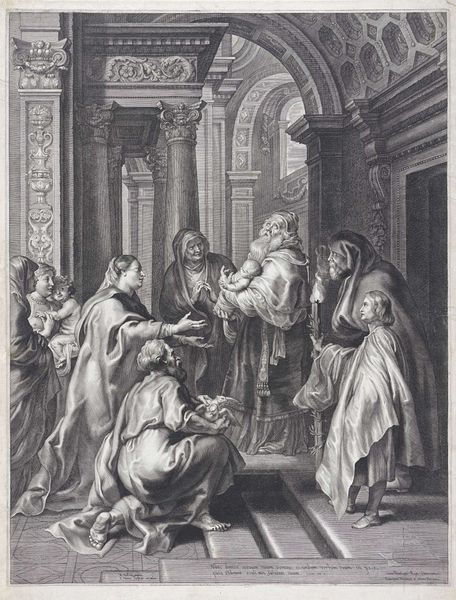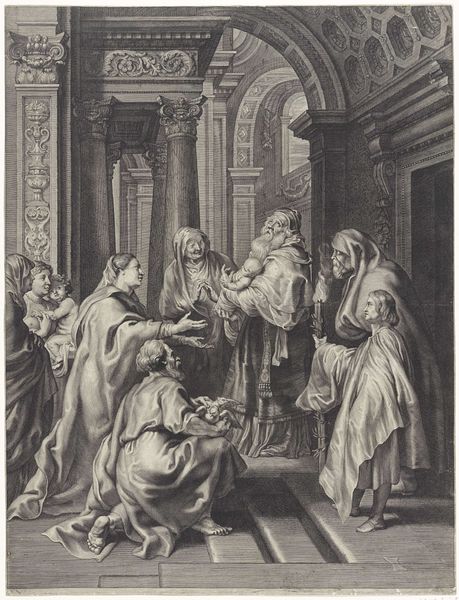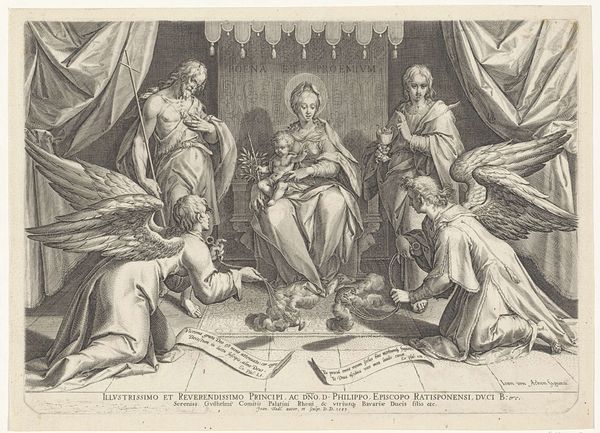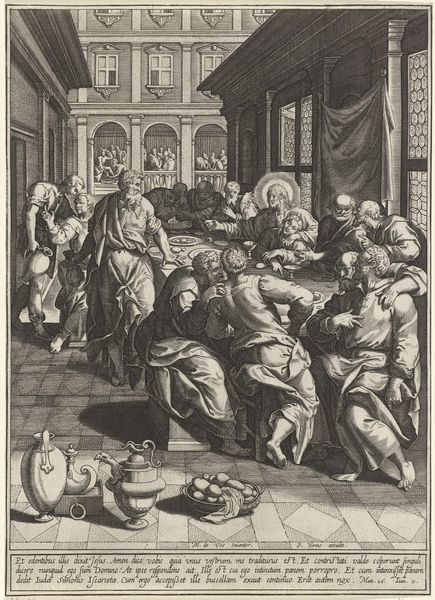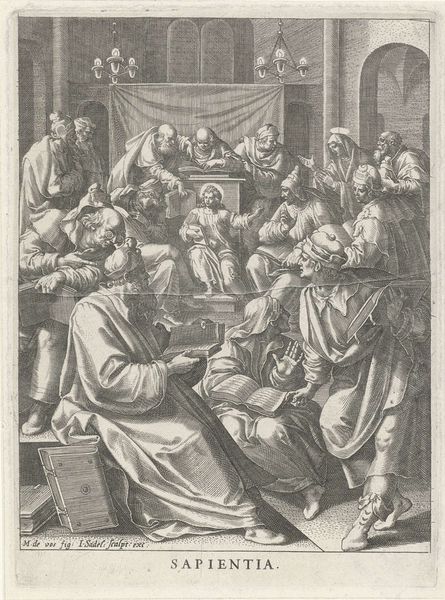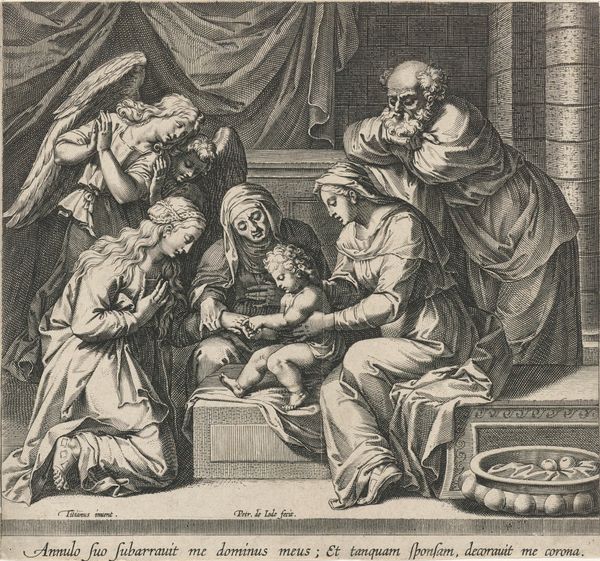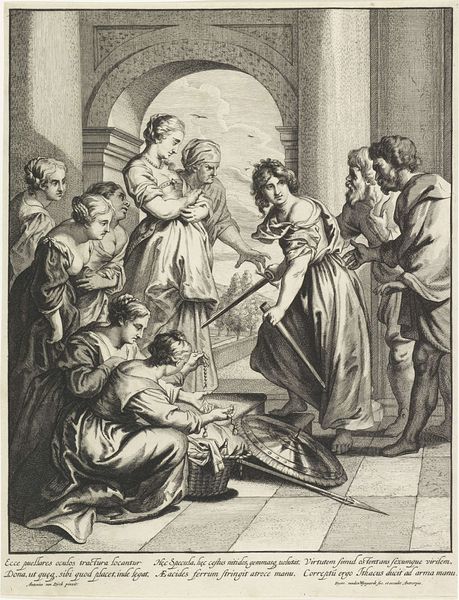
print, engraving
#
narrative-art
#
baroque
# print
#
old engraving style
#
perspective
#
figuration
#
line
#
history-painting
#
engraving
Dimensions: height 299 mm, width 405 mm
Copyright: Rijks Museum: Open Domain
Curator: This engraving, Voetwassing, or the Washing of the Feet, by Jacob Matham, dates to 1617 and is part of the Rijksmuseum's collection. Editor: The drama in this baroque artwork is palpable. It strikes me as an intimate, yet powerful depiction. I notice that while the artist utilized soft contrasts, a scene of almost theatrical character unfolds. Curator: Indeed. Matham masterfully uses line to emphasize the narrative, drawing us into this profound act of humility. Note how the central figures are framed, drawing the eye to the action itself, emphasizing not only a demonstration of kindness, but also a subversion of social status. Editor: This imagery of foot washing is dense with layers of meaning. The deliberate act of purification, particularly in its performance, resonates profoundly. Think about the societal implications and inherent power dynamics; by literally kneeling at another's feet, one embraces a role typically associated with those of lesser status, effectively dissolving boundaries, if only for the moment. Curator: Precisely. In Christian iconography, foot washing symbolizes spiritual cleansing and the imperative of service and love, reflecting ideals of empathy and selfless sacrifice. Its persistent presence suggests enduring appeal, speaking to something universally understood about dignity. Editor: Let's remember this piece also speaks to specific social norms. In a time characterized by pronounced hierarchy and formalized interactions, Matham spotlights Jesus in the lowliest of roles. It makes a strong commentary about the role of leadership and the rejection of worldly authority. This theme is all the more poignant considering Matham worked within a society increasingly concerned with issues of class and power. Curator: These enduring symbols remind us that some truths remain regardless of when they're expressed. The narrative of human relations, service, and reverence captured here continues to resonate deeply across generations and cultural contexts. Editor: This scene isn’t just a visual story—it’s a poignant expression of our ongoing struggle with privilege and inequity, continuing to stimulate contemplation regarding equality in present-day dialogues. It’s amazing to consider how potent and alive historical art can remain.
Comments
No comments
Be the first to comment and join the conversation on the ultimate creative platform.


